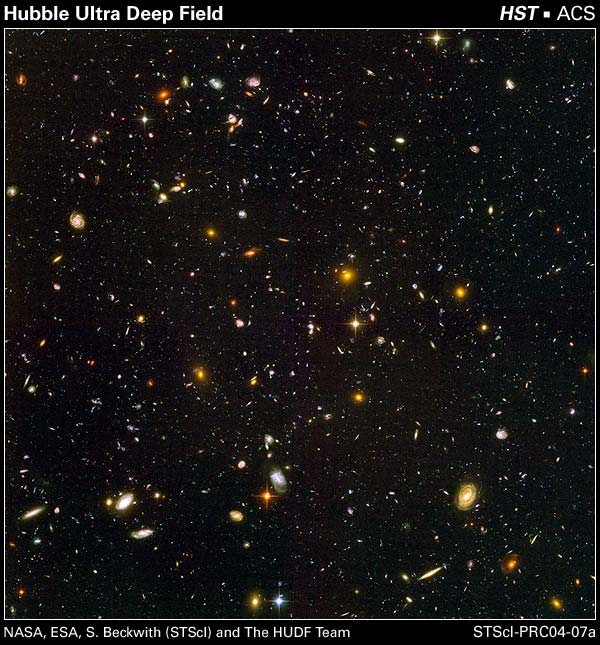A century ago, the arrangement of the universe was not at all well understood. The majority opinion amongastronomers was that everything our telescopes could see was organized into one vast celestial system called the Milky Way. A minority view, however, held that the Milky Way was only one "island" of stars, gas, and dust, and that there were other such islands beyond.
An important clue to which perspective was right seemed to be hidden in the nebulae—fuzzy smears of light ("nebula" means "fuzzy") whose nature had been a source of debate for centuries. Some were clearly groups of many stars, but in 1907 there was no way to say how far away each group might lie. Others were indistinct splotches, more likely to be the gas and dust that supplies the raw material for new stars and planets. New ways of finding distances to the nebulae were desperately needed, as were better telescopes for getting clearer and brighter views of them.
The first decades of the twentieth century, among the most productive in the history of astronomy, would supply both. A way of using variable stars—stars that changed their light output in a repeating cycle—allowed astronomers to determine distances to star groups that had never been measured before, and the world's largest telescope, located on Mount Wilson in Southern California, went into operation in 1918. The key to settling the debate about the organization of the universe turned out to be a fuzzy object that had been observed and cataloged by many observers (including William Herschel) called the Andromeda Nebula (after the constellation in which it was located). It was entry 31 in Charles Messier's 18th century catalog of interesting fuzzy objects, and is thus also called M31 by astronomers.
By the 1920's, M31 was clearly understood to be a grouping of stars, but nobody was sure where this group stood in the cosmic scheme of things. Using variable stars as distance markers and the giant telescope on Mount Wilson, Edwin Hubble (then a young and little-known astronomer) was able to show that the Andromeda Nebula was over amillion light years away from Earth. It was the largest distance ever measured, and its announcement earned a standing ovation at the meeting of astronomers at which it was first read in 1925.
Clearly, the Andromeda Nebula was a system of stars quite separate from the Milky Way, and in many ways comparable to it. From this simple observation, soon repeated for other starry nebulae, it became clear that the Milky Way was only one star system (or galaxy) among myriad others. This was the birth of our modern universe of galaxies, so poetically celebrated in Seeing in the Dark.
Today, astronomers have measured the distance to the Andromeda Galaxy much more precisely; they find it to be about 2 1/2 million light years away. It is a majestic spiral-shaped galaxy, similar to our Milky Way, but containing many more stars.
The Andromeda Galaxy is the nearest major galaxy to our own. (We do have closer neighbor galaxies, but they are much smaller. Two of them, the Magellanic Clouds, can be seen with the naked eye from Earth's southern hemisphere. They look like detached scraps of the Milky Way.) The Milky Way, the Andromeda Galaxy, and their retinue of a few dozen smaller galaxies make up what astronomers call the Local Group. In recent decades, it has become clear that most galaxies are organized into small groups like our own, and that the groups typically belong to large galaxy clusters, sometimes containing thousands of galaxies.
Galaxy groups and clusters, in turn, often belong to vast super clusters measuring hundreds of millions of light years in diameter. Before our minds start to reel at these scales, let's return to the Andromeda Galaxy and examine it from our vantage point on the dust-grain planet we call Earth.
The remarkable thing is that the central bright region of the Andromeda Galaxy can—when it's really dark, and you know just where to look—be glimpsed with the naked eye. A pair of good binoculars will show you some more of it, but don't expect it to look anything like the dramatic photograph on this page taken by amateur astronomer Robert Gendler. It takes a long exposure with a good telescope to capture enough faint light from the galaxy to reveal its colors and the details of its spiral structure.
Still, if you get to see the Andromeda Galaxy, consider that you are seeing light 2.5 million years old, dating from when the human species was just beginning to establish a fragile foothold on planet Earth. This was the light that helped humanity first comprehend the grand scheme of the universe

No comments:
Post a Comment